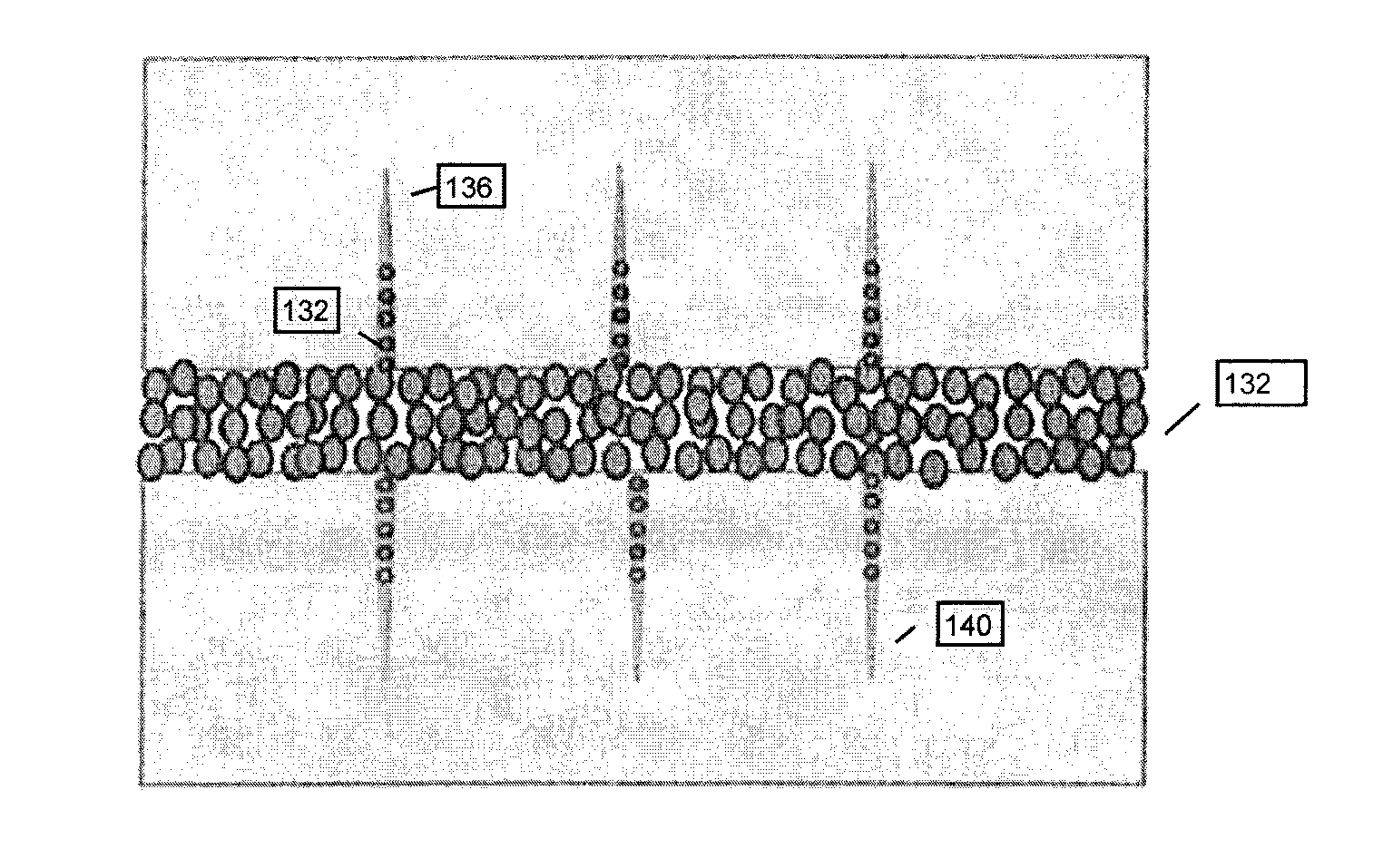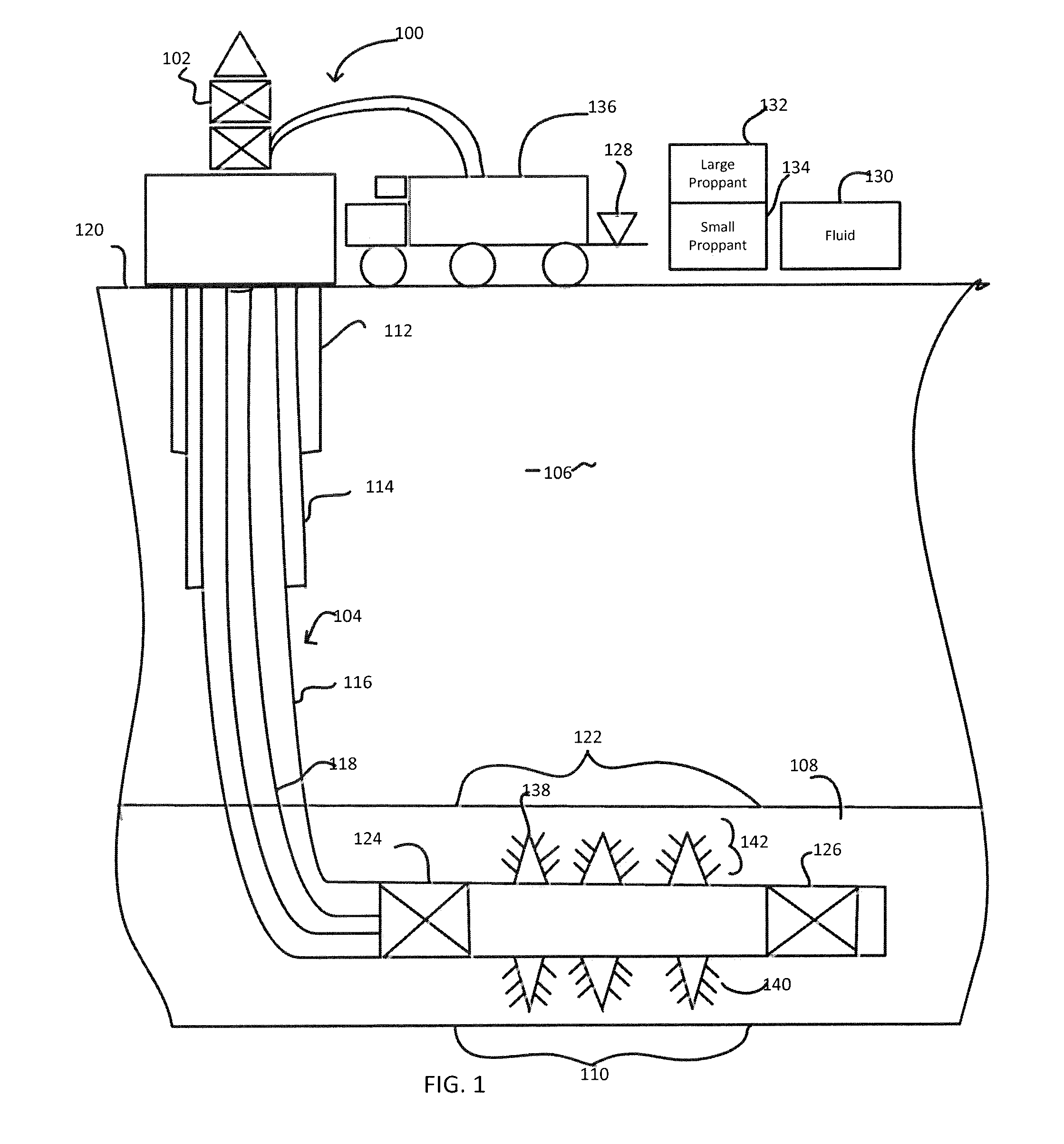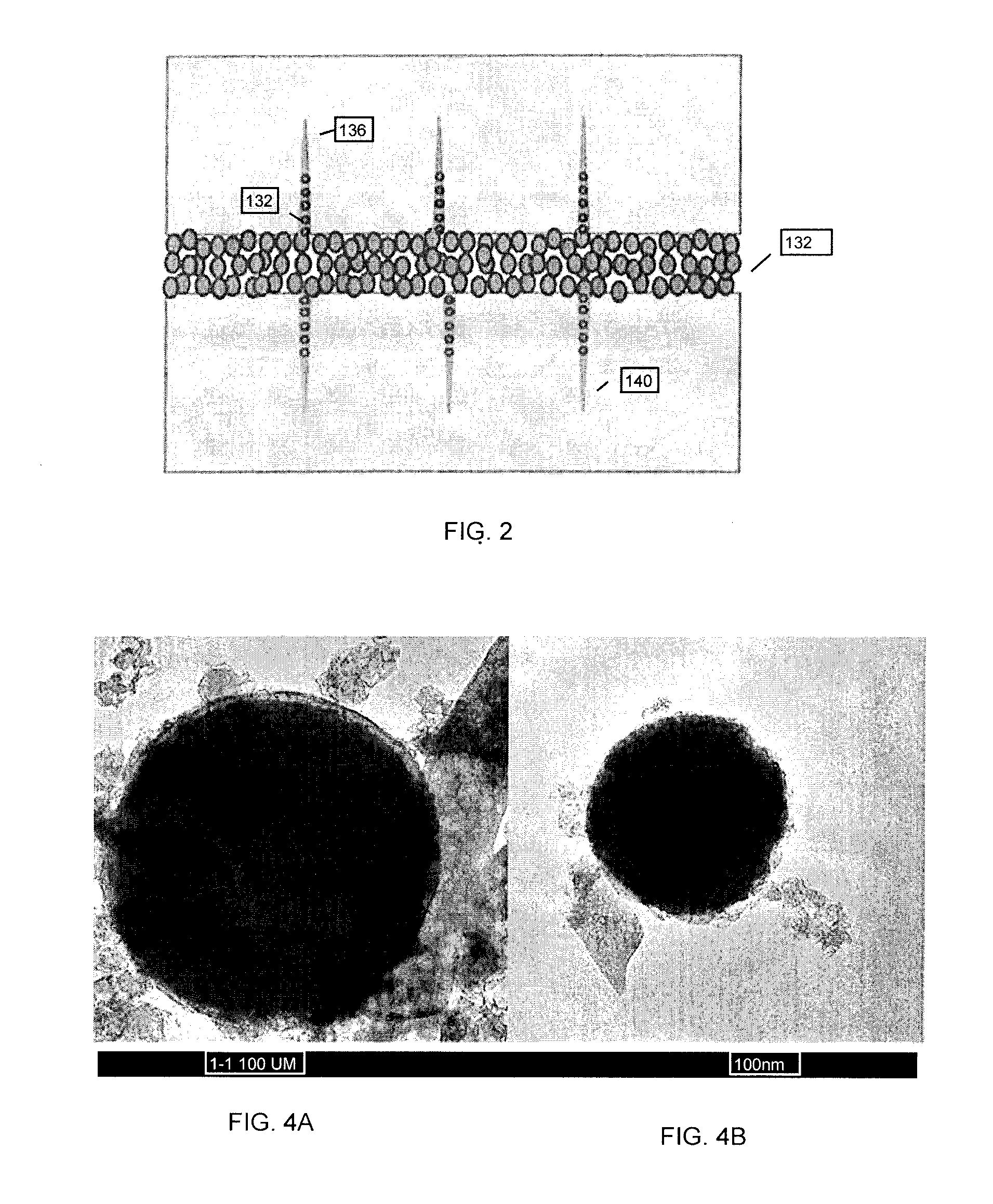Nano-proppants for fracture conductivity
a technology of nanoproppants and conductivity, applied in the direction of fluid removal, chemistry apparatus and processes, borehole/well accessories, etc., can solve the problems of insufficient conductivity of micro-fractures, insufficient penetration into existing or generated micro-fractures, and reduce the production of tight shale formations, so as to increase the total extended the conductivity of micro-sized fractures is increased, and the effect of increasing the length of the fracture network
- Summary
- Abstract
- Description
- Claims
- Application Information
AI Technical Summary
Benefits of technology
Problems solved by technology
Method used
Image
Examples
working examples
[0035]Fly ash particles were tested for their size, nano-hardness, reduced elastic modulus, and fluid loss prevention capabilities as well as for their induced fracture conductivity.
[0036]All tests supported the application of fly ash nanoparticles as fluid loss additives and nano-proppants.
[0037] In summary of the results to follow, fly ash nanoparticles were found to have the following properties:[0038]1) High sphericity as observed from the TEM images which makes them ideal candidates to be used as proppants[0039]2) High mechanical strength and reduced elastic modulus which, as observed from the nano-indentation experiments, would enable them to withstand the stresses that proppants are likely to be subjected to in most shale formations[0040]3) Found to be effective fluid loss additives when tested with static fluid loss tests[0041]4) Formed a conductive proppant pack when used as proppants in the long term fracture conductivity tests
[0042]The results of this study showed that fl...
example 1
Core Saturation and Porosity Measurement
[0069]After measuring the length and diameters of core plugs to establish bulk volume by calculation, the cores were dried in a 70° C. oven until they reached a constant weight. Cores were evacuated for 30 minutes using a desiccator connected to a vacuum pump. The valve to the vacuum pump was closed next, and inlet valve was opened to allow the flow of 2% KCl. Inlet lines were filled with the saturation fluid before opening the inlet valve. Porosity was calculated by weighing the core sample before and after its saturation with 2% KCl brine. Pore volume as a percentage of bulk volume was calculated using the measured density of 2% w / w KCl.
example 2
Permeability Measurement
[0070]Permeability of the cores was determined utilizing the technique and apparatus previously published by Bose et al., 2014 shows the apparatus used to measure the permeability of the cores. An ISCO pump filled with SOLTROL-130 was connected to a transfer cylinder filled with SOLTROL-130 and 2% w / w KCl. A Hassler-type core holder supported by a hydraulic pump, in order to apply confining pressure, was connected to the transfer cylinders. A differential pressure transmitter (Honeywell) connected to the inlet and outlet of the core and the tubing connecting the transmitter to the flow line was filled with SOLTROL-130. The whole setup was placed in a constant temperature chamber. This setup was used for the permeability measurement of the cores used for fluid loss tests. Pressure drop, temperature of cabinet, viscosity and the permeability (calculated using Darcy's law) were recorded during each test.
PUM
| Property | Measurement | Unit |
|---|---|---|
| grain size | aaaaa | aaaaa |
| particle diameter | aaaaa | aaaaa |
| particle diameter | aaaaa | aaaaa |
Abstract
Description
Claims
Application Information
 Login to View More
Login to View More - R&D
- Intellectual Property
- Life Sciences
- Materials
- Tech Scout
- Unparalleled Data Quality
- Higher Quality Content
- 60% Fewer Hallucinations
Browse by: Latest US Patents, China's latest patents, Technical Efficacy Thesaurus, Application Domain, Technology Topic, Popular Technical Reports.
© 2025 PatSnap. All rights reserved.Legal|Privacy policy|Modern Slavery Act Transparency Statement|Sitemap|About US| Contact US: help@patsnap.com



